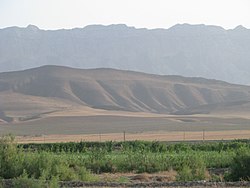Frequent Flyer Mileage Expiry
Edited to add - this post is no longer being maintained. However, my new site at Boarding Area has a mileage expiry post which is being regularly updated.
Prompted by US Senator Charles Schumer's attempt to regulate frequent flyer program mileage expiry, the latest Inside Flyer includes a piece on mileage expiry of frequent flyer and frequent stay programs.
They not only look at the expiry policy, which varies widely between programs, but also at how well it is communicated. I agree with Randy's wish that programs simply state the facts as they apply to each member.
Your miles will expire on {date} unless you {do this}.
Far too many programs either do not make the expiry explicit (forcing their members to hunt for the policy) or just state the policy and leave it to their members to work out what the expiry date actually is.
Here is a quick summary of frequent flyer program mileage expiry policies, in a subjective ranking from least to most restrictive. I've included rather more frequent flyer programs than are included in the Inside Flyer article, but I have not included any of the frequent stay programs expiry policies.
No expiry
Shanghai Airlines
TAP (with fee every 3 years)
No expiry for grandfathered miles
Asiana (miles earned before 30 September 2008)
Korean (miles earned before 30 June 2008)
No expiry with program issued credit card
Lufthansa et al
No expiry with elite status (any elite status unless otherwise mentioned)
Air France/KLM
Air New Zealand (gold and gold elite only)
ANA (diamond only)
Lufthansa et al
Malaysian (platinum only)
3 years after last activity
British Airways
Czech Airlines (redemptions do not count as activity)
Midwest
Qantas (until 30 June 2010)
Spanair
Virgin Atlantic
2 complete calendar years after last activity
Frontier
2 years after last activity
Alaska (account cancellation is not necessarily enforced)
bmi
Delta (12 months for brand new members)
18 months after last activity
American
Continental (account cancellation is not necessarily enforced)
Hawaiian
Mexicana
Qantas (from 1 July 2010)
United
US Airways (can pay fee to extend 18 further months)
10 years after earning
Gulf Air
7 years after earning
Asiana elite members (miles earned before 1 October 2008 are grandfathered)
1 year after last activity or 7 years after earning, whichever comes first
Air Canada (at 7 years after earning can be extended for a fee)
5 years after earning
Asiana non-elite members (miles earned before 1 October 2008 are grandfathered)
Korean (miles earned before 1 July 2008 are grandfathered)
SAS
4-5 years after earning
Air New Zealand
Qatar
3-4 years after earning
Emirates
Malaysian (can be extended 12 months for a fee)
South African
Thai
3 years after earning
Cathay Pacific
El Al
Lufthansa et al
Singapore Airlines (can be extended up to 12 months for a fee)
TAP (can be extended indefinitely, by 3 years at a time, for a fee)
Turkish Airlines
2 years after last flight activity
Aeroflot
2 years after last status earning flight (on own metal)
Aeromexico
20 months after last status earning
Air France/KLM
1 year after last earning
JetBlue (only earning from JetBlue flights or JetBlue Amex counts)
2-3 years after earning
ANA
2 years after earning
Air China
Southwest
2 years after earning with elite status or airline issued credit card
AirTran
18 months after earning
Virgin America
1 year after earning
AirTran
6 months after last time earnt 2000+ miles
Spirit
I'm not sure why Aeromexico got an Inside Flyer thumbs up when Air France/KLM got a thumbs down. Sure Aeromexico has 24 months expiry versus 20 months, but neither are particularly long and Aeromexico requires earning on an Aeromexico flight in that period whereas Air France/KLM's requirement is for any Sky Team flight.
I don't think the Inside Flyer explanation of how Singapore Airlines miles expire is clear or correct. Expiry is based on the date each mile was earned, regardless of how much or little other account activity there has been since then.
Summary
Some of these expiry policies are downright mean. Anything tied to date of earning, or requiring activity more often than once every 2 years has the effect that the frequent flyer program provides very little value for infrequent flyers. It is natural and right for the programs to concentrate on members who are high value to the airline and try to save costs by eliminating low value memberships. However, it is worth them remembering that travellers' circumstances change and an unduly harsh expiry rule can jeopardise a potentially valuable future relationship. Or, if Sen Schumer has his way, result in government interference. No one wants that!
Updated for Aeroflot and Mexicana.

 Steven is globe hopping photographer who has branched out into travel and airline consultancy. He has an active blog,
Steven is globe hopping photographer who has branched out into travel and airline consultancy. He has an active blog, 


